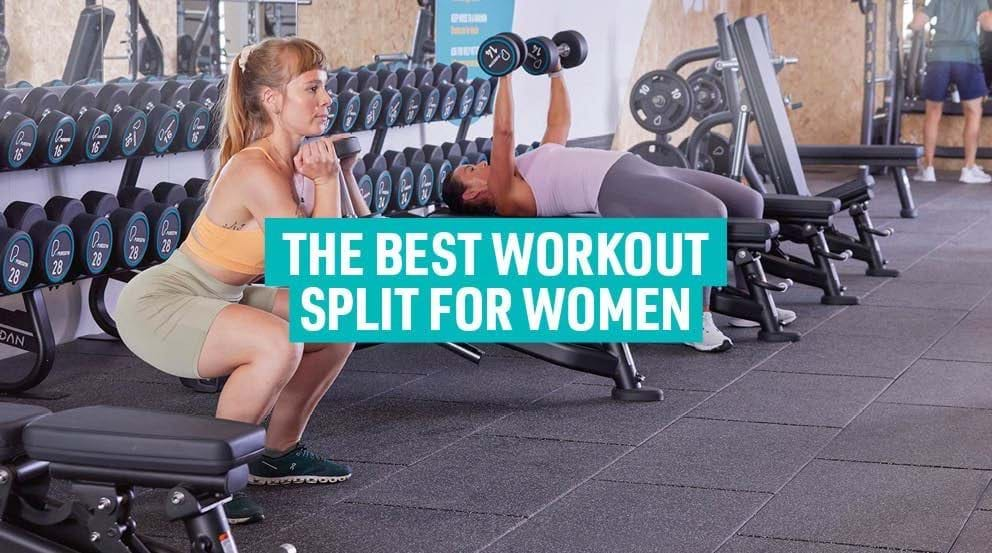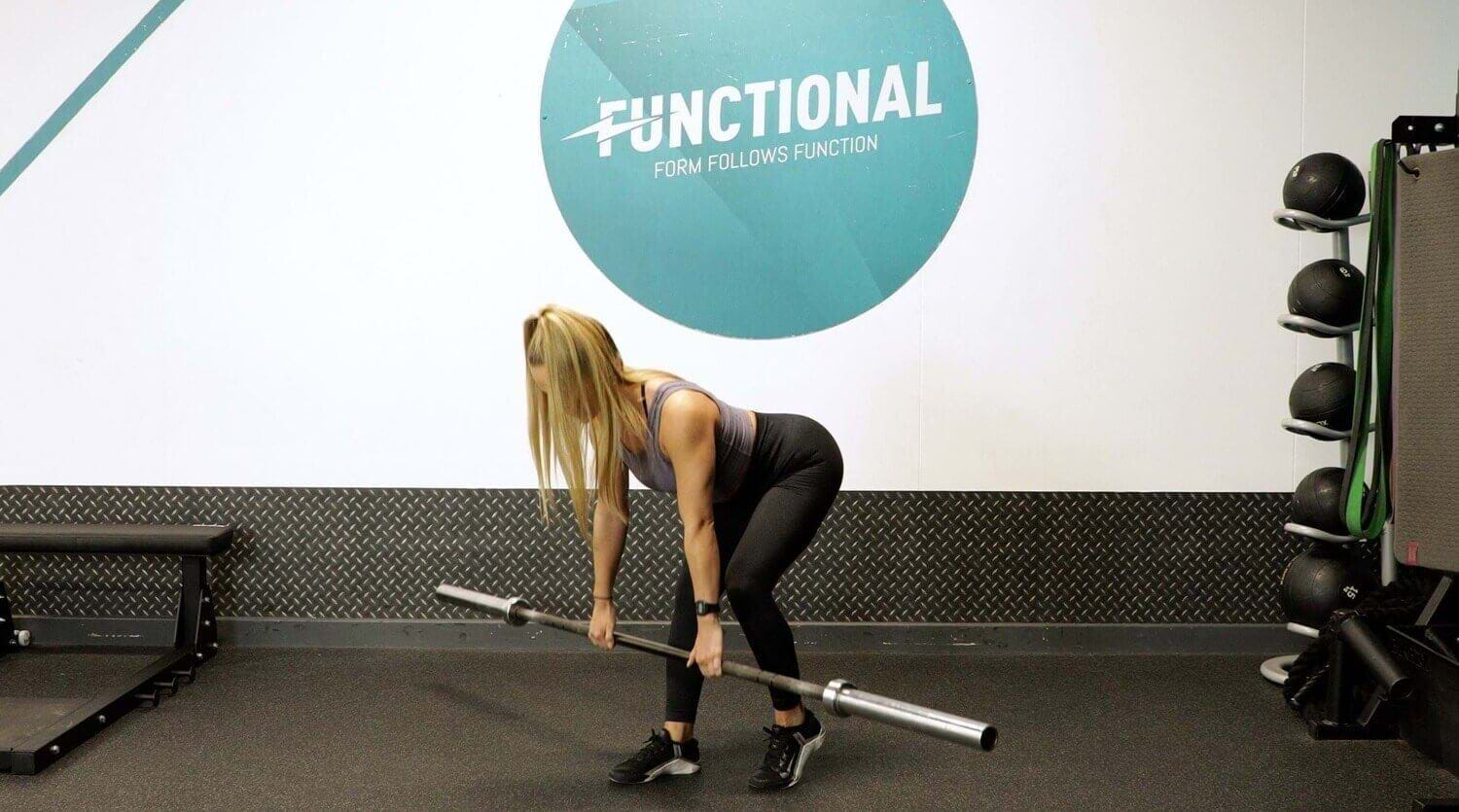The Best Workout Split for Women

Workout Splits | Benefits | Which Split | 3-Day Split | 4-Day Split | 5-Day Split | FAQs
Page last updated: 2nd October 2025
When it comes to weight training for women, there is a lot of conflicting and confusing advice which can create fear around what to do at the gym, when to do it, and how often. This can cause women to avoid weight training completely, train too much, or not see results from the training they do.
Having a structured training plan is the best way to get started, avoid overtraining, and see results. In this blog, Do The Work Coach Dale Wallace, who is based in PureGym Preston, explains how workout splits can help to create a structured programme that works with your lifestyle.
Quick summary:
- A workout split helps you structure your training so each muscle group gets enough work and recovery.
- Training each muscle group around twice per week is recommended for building strength and muscle while supporting fat loss.
- 3-day splits are great for beginners or busy schedules.
- 4-day splits offer a balance of volume and recovery for steady progress.
- 5-day splits suit more advanced lifters who want to maximise muscle growth.
- The best split is the one you can stick to consistently.
Most of my female clients come to me having done group fitness classes and cardio for years, but are no longer making any progress, or they want to start lifting weights but don't know where to start. My aim with this blog is to show you why weight training workout splits are so beneficial and help you to find a workout split that works for you.
Everyone has different responsibilities, and the amount of time one person can put aside for training each week is different to the next. Finding a workout split that matches the time you can put into the gym will mean you make the best use of your valuable time and see the most progress possible.
Jump straight to the workout splits:
What Is A Workout Split?
A workout split is the way you organise your training across the week by dividing workouts into different muscle groups or movement patterns. Instead of training your whole body every session, a split focuses on specific areas on different days.
For example:
Full-body split: Train all major muscle groups in each session (2 to 3 days per week).
Upper/Lower split: Alternate between upper-body and lower-body days (typically 4 days per week).
Push/Pull/Legs (PPL) split: Separate workouts by movement patterns - pushing exercises, pulling exercises, and legs (5-6 days per week).
They are a way to follow a structured workout programme and make sure you hit each muscle group twice. Studies show that this is the best approach for both hypertrophy and strength. Even if your goal is to lose weight, you want to stimulate the muscle tissue enough so that you don't lose muscle mass instead of fat.
What Are The Benefits Of Workout Splits?
Balanced training
Following a split helps make sure all major muscle groups are trained consistently. Many people naturally gravitate toward the exercises they enjoy (for example, training legs less often or skipping upper body). A structured split prevents these imbalances, which not only improves overall strength and appearance but also reduces the risk of injury caused by weak supporting muscles.
Better recovery
Splits allow you to focus on certain muscle groups each day while others rest. For example, if you train legs on Monday and upper body on Tuesday, your legs get 48+ hours to recover before being trained again. This recovery window is crucial because muscles grow and adapt during rest, not while you're lifting. Without it, you risk overtraining, persistent soreness, and even injury.
Efficient progression
Research shows that training each muscle group around twice per week provides the most consistent improvements in muscle growth (hypertrophy) and strength. A workout split makes it easier to hit this frequency without cramming too much into a single session. It also lets you spread training volume across the week, so you can work harder on each body part without workouts becoming overly long or fatiguing.
Customisation for your goals
Workout splits are highly adaptable. If your goal is building muscle, you might follow a push/pull/legs or upper/lower split to maximise training volume. If you're focused on fat loss and toning, a 3-4 day split that combines resistance training with cardio can help you maintain lean muscle while burning calories. Splits also let you adjust intensity to fit your fitness level, whether you're a beginner or more advanced.
Consistency and structure
One of the hardest parts of fitness is knowing what to do when you walk into the gym. A workout split removes guesswork by giving you a clear plan for each day. This structure helps build consistency, which is the most important factor in achieving long-term results. It also makes it easier to track progress, since you'll know when and how often you've worked each muscle group.
What Workout Split Should I Do?
When choosing a split, the main thing to consider is how much time you can dedicate to training each week. There's no point choosing a 4-day split if you can only make it to the gym three times!
For beginners, I recommend starting with a 3-day split as this will be easiest to stay consistent with, while still seeing good progress and allowing for enough recovery. For intermediate lifters, the 4-day split is a great option, and for advanced lifters, the 5-day split can work well if you can commit to this each week. However, everyone should be able to see great results with a 3-day split as long as they progressively overload by increasing the weight or reps of their lifts.
If you love the buzz of exercising but find going above 3-4 weight training sessions each week is too much, you can always consider adding a cardio or mobility workout to your weekly routine, or heading to a low impact class like yoga or Pilates.
3 Of The Best Workout Splits For Women
Here are three of the workout splits I most regularly recommend to my female clients.
3-Day Split Workout For Women
Most women I coach find the 3-day split easy to stick with, especially if they've got busy jobs or family commitments. It's time-efficient and beginner-friendly, giving you enough frequency to hit each muscle group without overwhelming your schedule. It's a solid choice if you want results while training on alternate days.
I recommend starting with 5-minutes of warm up exercises, spending 60 minutes lifting weights, and end with 10-15 minutes of moderate intensity cardio.
- Monday: Upper body
- Tuesday: Rest
- Wednesday: Lower body
- Thursday: Rest
- Friday: Rest
- Saturday: Full body
- Sunday: Rest
Need ideas for workouts? Why not try this upper body workout for women, this beginner lower body workout, or this full body toning workout for women.
4-Day Split Workout For Women
With four sessions per week, you can train each muscle group twice while allowing recovery in between. This makes it a balanced option for building muscle, improving strength, and progressing beyond a beginner routine.
For 4 days training each week, I recommend a women's upper lower split workout plan. As with a 3-day split, start with a warm up and finish with steady state cardio. I encourage clients to spend 50-60 minutes lifting weights for a 4-day split.
- Monday: Upper body
- Tuesday: Lower body
- Wednesday: Rest
- Thursday: Upper body
- Friday: Lower body
- Saturday: Rest
- Sunday: Rest
5-Day Split Workout For Women
It's rare that I'd recommend a women's 5-day split workout routine for beginners, as this level of training can cause under-recovery and hamper progress, as well as lead to reduced energy. However, for intermediate and advanced lifters who are already training 4-5 times a week, a 5-day split can be a great way to drive progress as it allows you to really target each muscle group.
With a 5-day split, I'd recommend just 5-10 minutes cardio at the end of a session, at a slightly lower intensity.
- Monday: Quads and shoulders
- Tuesday: Back and biceps
- Wednesday: Chest and triceps
- Thursday: Rest
- Friday: Glutes, hamstrings, and calves
- Saturday: Back, chest and shoulders
- Sunday: Rest
Common Questions About Women's Workout Splits
Do women need different workout splits than men?
Not really. The principles of strength training apply to everyone, and muscles respond to resistance in the same way, regardless of gender. The main difference is often goals: many women prioritise toning, fat loss, or glute development, while some men focus more on upper-body size. A split can be adapted to your goals, but there's no need for an entirely different programme.
Is a 3-day split enough to see results?
Yes, if it's structured well. A 3-day split can train each major muscle group often enough to build strength, improve fitness, and support muscle growth. It's especially effective for beginners or anyone short on time, provided the sessions are challenging and progressive.
What's better: push/pull/legs or upper/lower?
Both splits are effective. Push/pull/legs usually requires 5--6 sessions per week and gives more training volume for each muscle group, making it ideal for advanced lifters. Upper/lower works well with 4 sessions per week and offers a good balance of recovery and progress. The "better" option depends on how many days you can consistently train.
How long should I follow one split before changing?
Most people can stick with the same split for several months, as long as they're progressing (lifting heavier, adding reps, or improving performance). If your progress stalls, your schedule changes, or your goals shift, that's the time to adjust your split.
Should I combine cardio with my split workouts?
Absolutely - combining strength training with cardio is beneficial for health and fitness. You can add cardio on rest days or after weight training, depending on your goals. If fat loss is a priority, cardio can help increase calorie burn, but strength training should remain central to preserve muscle.
Final thoughts:
Workout splits take the guesswork out of training and give you a clear path to follow. Whether you can commit to three, four, or five sessions a week, choosing a split that matches your lifestyle will help you train smarter, avoid overtraining, and see better results over time.
If you want more help creating a structured workout programme, speak to a Personal Trainer like me - we can help to create a workout plan that is tailored to your goals. Find your nearest gym here and get started.


